Zoë de Givenchy is caretaking the legacy of fashion designer Hubert de Givenchy
Melbourne-born lifestyle entrepreneur Zoë de Givenchy is not only a proud custodian of Hubert de Givenchy’s majestic Loire Valley estate Château du Jonchet, she is also championing his creative vision.
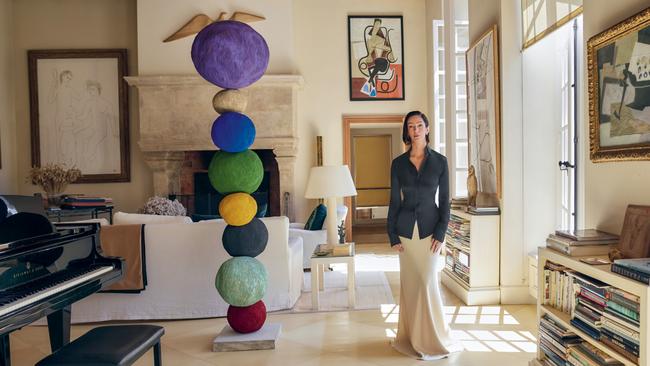
It’s an unseasonably warm morning when WISH arrives at the Givenchy family estate in the Loire Valley, a two-hour drive from Paris. Zoë de Givenchy, the Australian-born entrepreneur behind exquisite lifestyle brand Z.d.G., is in residence with her two children, 11-year-old son Louis and seven-year-old Inès, while her husband Olivier de Givenchy finishes up work in Los Angeles before their European summer together begins.
The peripatetic family spends the school year in Beverly Hills, with the June-July holidays based in France at the magnificent Château du Jonchet – the former country home of Olivier’s uncle, legendary couturier Hubert de Givenchy and his partner, fellow fashion designer Philippe Venet. Come August, the de Givenchys return Stateside to their Malibu beach escape, while Christmas and Easter are celebrated on exclusive Caribbean enclave, Harbour Island.

Holiday homes are one thing, but becoming custodians of Château du Jonchet is another. “It was a big decision, and one we took with great, great care with responsibility attached,” begins Zoë de Givenchy, who grew up in Melbourne and later met her husband in London, “but one that we relished, that’s for sure. “It’s been a wonderful place for us to come together with family because it’s a place where their vision of beauty and their love of life and of nature can be kept alive,” she adds of the couple who both passed away at the age of 91, albeit four years apart.


“Of course, this happened before Philippe passed away [in February 2021],” she clarifies, of Olivier’s godfather. “After Hubert died, it was Olivier and James who discussed it,” she adds, of her husband’s US-based identical twin, jewellery designer James Taffin de Givenchy. “Then Olivier said, ‘What do you think?’ Because, of course, we were living in the US then, and we still are. Olivier runs JP Morgan [Private Bank] out there, so this would only ever be a holiday house for us. And a big one to manage from that distance,” she adds of the grand property that’s surrounded by a moat and occupies 38 glorious hectares alongside the Aigre River.
“I think it’ll take some time before we really get to grips with everything,” she smiles. “It’s really a retreat for us. Hubert and Philippe kept this house immaculately, and their energy is emanating everywhere. It’s really a house that looks very grand and very imposing upon arrival. But when you learn to live in it, it’s very light, and I mean that in every sense. It’s flooded with light.”

Even prior to de Givenchy and Venet acquiring the property in the early 1970s, it had been previously passed between an illustrious list of industry titans, from the architect Fernand Pouillon, who restored the château in the 1950s, to French pharmaceutical entrepreneur Roger Bellon. “Hubert had heard about it in the early ’70s because there was a lot of buzz about du Jonchet, and it was owned by a very famous French industrialist,” she says of Bellon. The Greek shipping tycoon Aristotle Onassis even contemplated buying the estate in the 1960s. “Onassis wanted to buy it for Maria Callas,” she recalls.
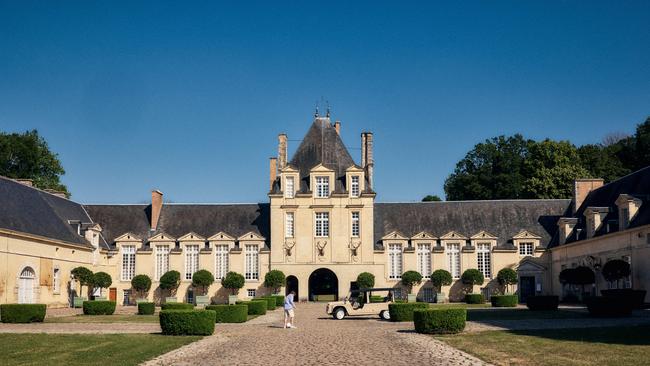
For the fashion duo – who met when Venet was an assistant to Elsa Schiaparelli in the 1950s – it was their weekend escape from Paris, which they lovingly restored both inside and out. “Hubert fell in love, and it became his masterpiece,” says de Givenchy. “He came every weekend with Philippe. They’d come out on a Friday with their labradors, and they’d be here until Sunday night. Hubert would work on the gardens. They would work on art projects together,” she says, of their beautiful atelier on one side of the château. “They did a lot of drawings and collage and painting together,” she adds of their works that still adorn many of the walls.
Du Jonchet is also where they would entertain their famous inner circle. “But few friends,” de Givenchy distinguishes. “They were very discerning when it came to their friendships and very loyal. They didn’t have huge lavish soirées, but rather more intimate weekend house parties where they’d have a few to stay every summer.” Such friends included Audrey Hepburn (de Givenchy designed clothes for her 1954 film Sabrina and by 1961’s Breakfast at Tiffany’s their style union was one for the history books) and American tastemaker Bunny Mellon. De Givenchy and Mellon designed the château’s potager (vegetable garden) and orangery together, and there is a blue and white patterned bedroom in the turret that remains dedicated to her.

“It’s taken us a couple of years to adjust to the rhythm of it, to learn from it, to explore the library, the archives, the house, and decide what it is that we need to revisit in terms of the gardens,” adds de Givenchy, who shares Hubert’s green thumb and recently replanted nearly a thousand bulbs – bluebells in the wood and daffodils along the river – which he first did some 30 years ago.
“The house is in immaculate condition, all we might do is add a few bedrooms above the stables,” she says. “We want to keep the same feeling, the same esprit of Hubert, really there’s not much to do.”
De Givenchy is instead experimenting with new art additions such as British artist and friend Annie Morris’s colourful Stack series in the grand salon. “When you have a template as good as this and certainly one that wasn’t done by a decorator – his fingerprints are all over it – one has to follow that. You don’t need to reinvent it. It’s really a very positive place despite its age.”
Looking back, du Jonchet’s complete history is just as convivial. “The château was built in 1537 and was then developed more fully by Louis II of Bouchet de Sourches,” de Givenchy explains. He enlisted famed Versailles architect Gabriel de Lestrade to design its spectacular stone staircase that connects the upper-floor salon to the lower-floor dining room. “The Comte de Sourches was a good friend of Louis XVI and was also very well respected locally,” she maintains. “During the Revolution he took care of his farmers and the local people. They had food and were cared for here. It wasn’t like Paris where the streets were heaving with poverty and desperation. He and his > wife divided their time between du Jonchet and Versailles, and had many children, so this was a happy family home from the very beginning,” smiles de Givenchy, adding that their two grown children from Olivier’s previous relationship often join them over the summer.
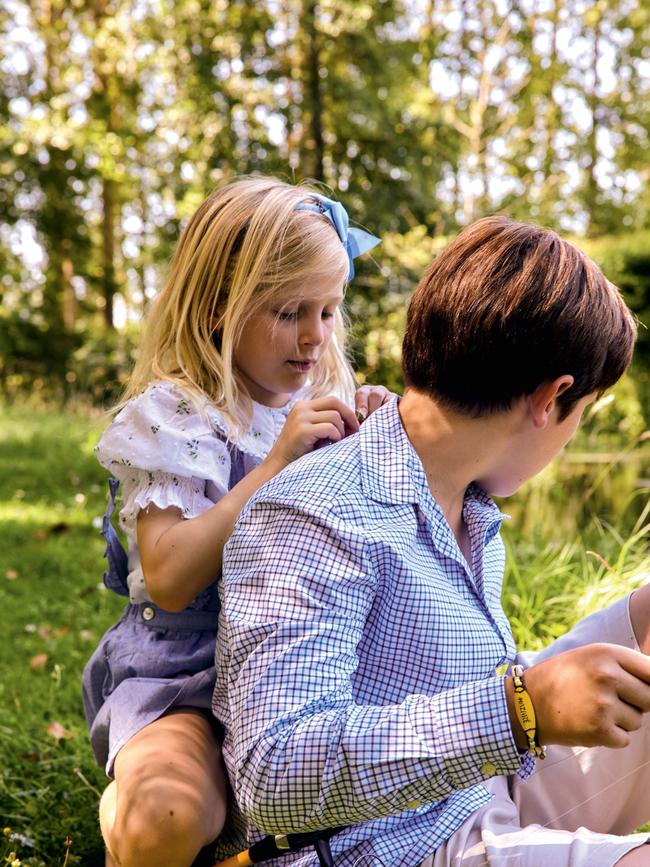
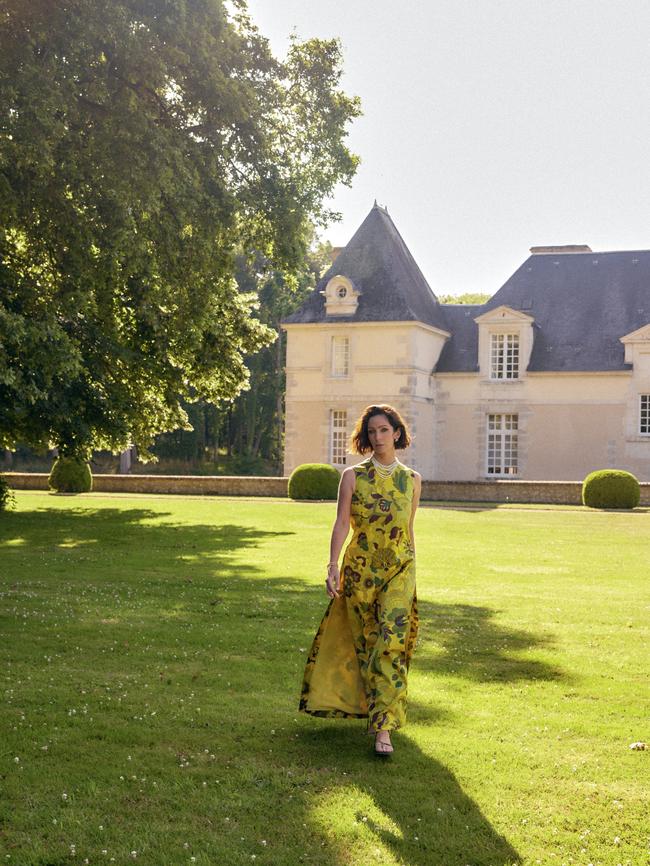
The couple met by chance at a mutual friend’s wedding in London. “I met this wonderful French American,” she smiles. At the time she was living between New York and the British capital, and they “weren’t separated after that”, later marrying on Harbour Island. The bride wore a Calais lace dress crafted by her designer friends of the brand Clements Ribeiro.
De Givenchy grew up in Victoria with two brothers and parents who were total Francophiles, taking their children to Europe at every opportunity. “It’s no accident that I was expected to learn French from age three,” she deadpans. “My mother really wanted a classical education for me. She’s an academic, so we would talk a lot about history and art. She has informed my curiosity of all things and encouraged me to travel, be creative and to believe that I was capable of forging my own path. Wherever I wanted that to be,” she smiles. “They came here and visited with Hubert and Philippe, too, and obviously loved it. It’s a very special place. Very special people.”
From the age of 11, de Givenchy boarded at Fahan School in Tasmania, from which her best friends still hail, before returning to Melbourne to study law and communications. “I feel so grateful for a childhood in Australia. Particularly now raising children, and the crazy times we are living in with social media and all the other influences. That grounded childhood in Australia was a total gift.” That said, Europe was always on her horizon. “I never thought of anything different than going to London,” she says. There she moved into finance and communications before setting up her own PR firm, which she sold when pregnant with her son.
And her first meeting with de Givenchy and Venet? It was solo over lunch at the couple’s Paris home. “It was a beautiful day outside and they had all the doors open,” she recalls. “[De Givenchy] was very easy going and charming. And Philippe was always so thoughtful. They were very curious people. They were very interested in what we were doing, what young people were doing. And very modern actually, in the way that they thought.
“[De Givenchy] would insist upon speaking French with me,” she remembers, despite his perfect English. “I would sometimes lapse into a bit of Franglais, and he would look at me quizzically and say, ‘Pardon?’ And I thought, ‘Oh god, OK. All right. I’ll keep trying.’ We bonded over gardens; we bonded over his table setting. At that first lunch he said to me, ‘Zoë, you know, you must keep these arts alive’.”
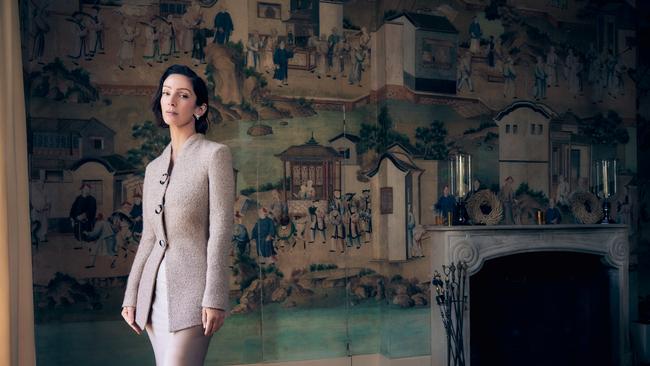
De Givenchy later introduced her to his favourite makers, which would become central to her brand Z.d.G., including 17th-century pottery masters Faïence Bondil, which is nestled in the picturesque Moustiers Sainte-Marie village in Provence. “He would go down there, and commission things and they would tell me stories of how he’d bring the grand ladies of the day, Audrey Hepburn, Bunny Mellon … He did a set of plates as a gift for the Aga Khans, he loved doing these things.”
Faïence, tin-glazed earthenware, quickly became a shared passion. “I started making things for my homes because I guess I was a little bored of the plain white plates everywhere. I fell in love with faïence because it was so light and so refined, even though it was quite simple,” she adds.
“Hubert said to me, ‘Every winter, would you commission something to keep them going?’ And I took that a bit to the extreme, and here we are,” she laughs of Z.d.G., which now includes hand-turned olivewood cutlery made in La Monnerie by a French family-run company founded in 1876, and whimsical, embroidered Venetian linens.
She had no plan to turn it into a business. “I remember Ruth and Tom Chapman came to our house for dinner in The Bahamas,” she says of the Matches founders. “By that stage, I’d made hand painted green bamboo plates and they fell in love with them and said, ‘Could you help us make something for our own homes?’ Then Ruth added, ‘Listen, if you ever want to do something commercial, please think about us at Matches because we’d love to do something special with you.’”
Shortly after, antipodean fashion designer Emilia Wickstead saw a safari motif plate design on Instagram that mirrored a capsule collection she was designing for the retailer. “She said, ‘Would you ever think of doing a service for a table if we did a lunch in Beverly Hills, Paris, and London with Matches?’. Before that, I had no intention,” de Givenchy says.
Three years on and Z.d.G. now graces the tables of several European royal families. “It really was one of the first homeware brands to see the value in creative tablescaping and was a leader with having a focus on handmade traditional heritage techniques, bringing them to life for the luxury customer,” says Cassie Smart, head of womenswear at Matches.
But when it comes to entertaining at du Jonchet, things remain very much as they always were. “Hubert was just really an incredibly gracious person,” de Givenchy says of her host, recalling her first trip just before she was married. “We would be up at 5am to get a car back to Paris to take the train to London, and he would be up waiting for us at the head of the table in his dressing gown and slippers looking immaculate. 5am. To have a cup of tea with us and see us off. Truly! I mean, I don’t know many people our age who’d do that?” A collared shirt is still required at dinner, and there’s no slogan tees at lunch. Children included. “I think that without making things feel awkward or stiff, that there’s a way of painting certain norms that enhance your experience of your home.”
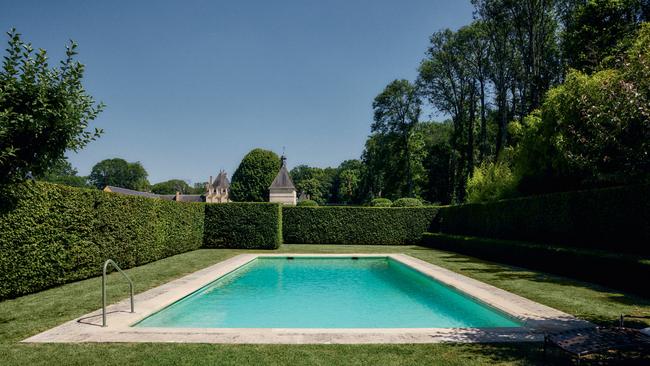
Meals, whether served at the pool house for lunch or in the dining room for dinner, are also unchanged. “We have inherited Ilda who’s the long-standing chef and housekeeper,” she says, of the team that lives on the property year-round to maintain it. “I decide with Ilda the menu a week in advance, with some room to move,” she explains. “It’s a mix of Philippe’s recipes and Hubert’s family recipes. Philippe was a wonderful cook.” Hubert de Givenchy’s grandma’s jam tart, tarte à la confiture, made with almond paste and homemade jam, remains on regular rotation. “He loved smoked salmon,” she also recalls, “but served very thinly on a silver plate so it keeps cold, which is a genius move, and with crêpes on the side. That’s our favourite Sunday night.”
In June 2022 Christie’s masterminded a final sale of the late couturier’s estate. “We did this sale because Hubert wanted one,” explains de Givenchy. (He was a member of the international board of the auction house.) “They did a spectacular job of really honouring his legacy and telling the story of them both. He has a big family and Olivier and James are one of seven,” she notes of the youngest twins.
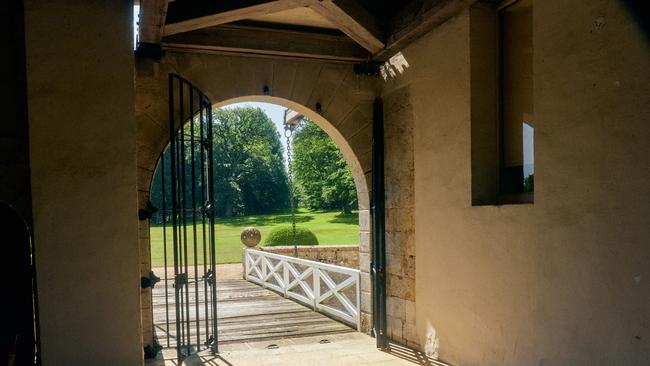
The collection of 1229 lots included an exceptional assortment of objéts d’art, 17th and 18th-century furniture and works of art, as well as the modern era by Picasso, Giacometti, and Miró from his Paris residence Hôtel d’Orrouer as well as Château du Jonchet. “In the end it was the decision of what would best tell the story of Hubert, of his collecting journey, and to memorialise his taste.”
More than 2000 people from 40 countries registered to bid, with French clients representing 30 per cent of buyers. “Hubert de Givenchy’s collection has [become] the second most valuable collection ever sold at French auction,” reinforced Cécile Verdier, president of Christie’s France as the final hammer came down. It achieved €118.1 million all told.
“You can see that thread throughout the objects he purchased throughout his life and his ultimate respect for artisans,” says de Givenchy. “That’s one of the reasons why I get excited about this journey of building Z.d.G., in that I’m sort of following, not entirely in his footsteps. It’s certainly a lot of me in there, but in exploring some of these arts and artisans we’ve discovered Hubert as well in the process.”
Under her watch that legacy remains perhaps at its strongest at Château du Jonchet.





To join the conversation, please log in. Don't have an account? Register
Join the conversation, you are commenting as Logout